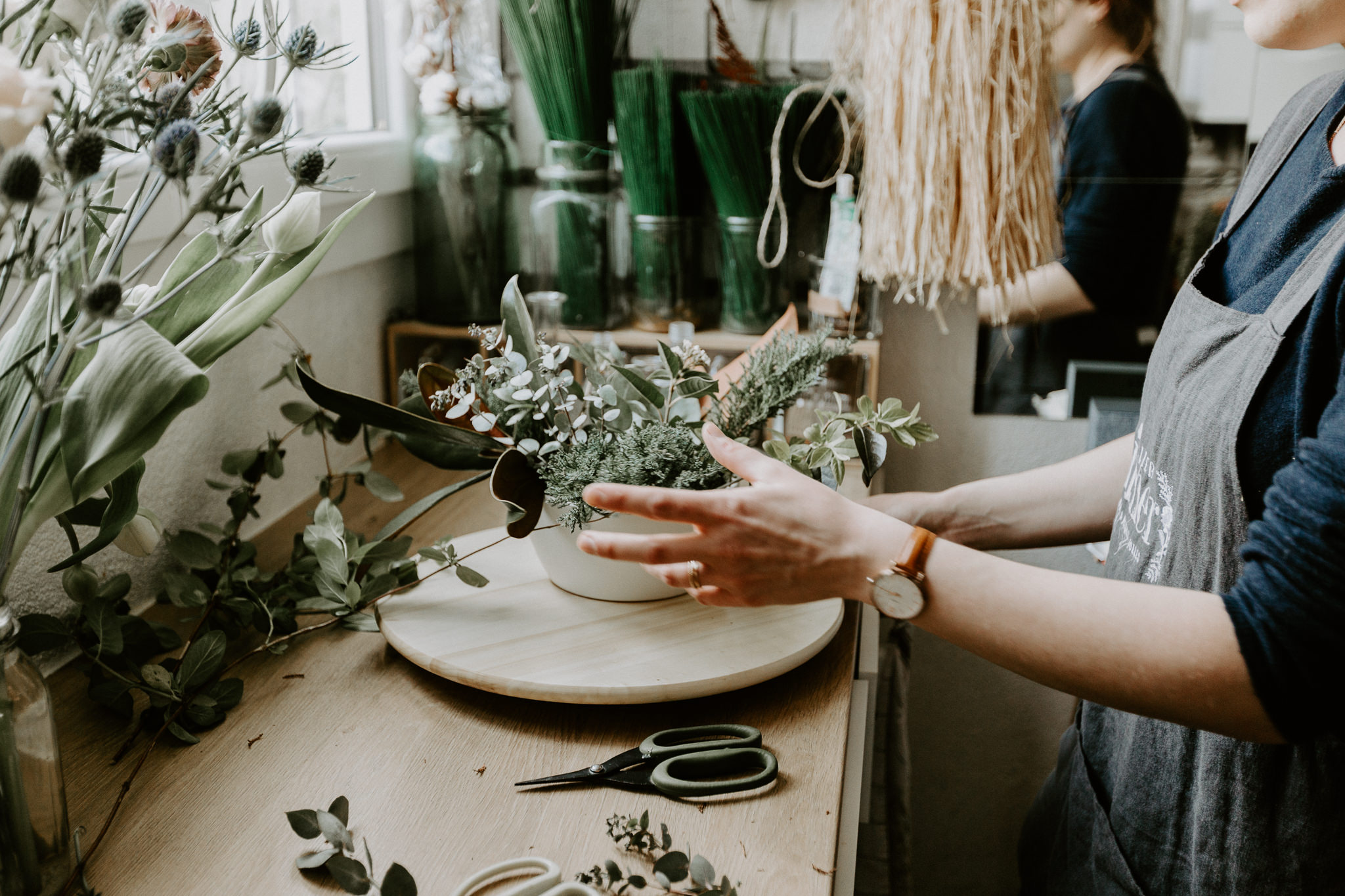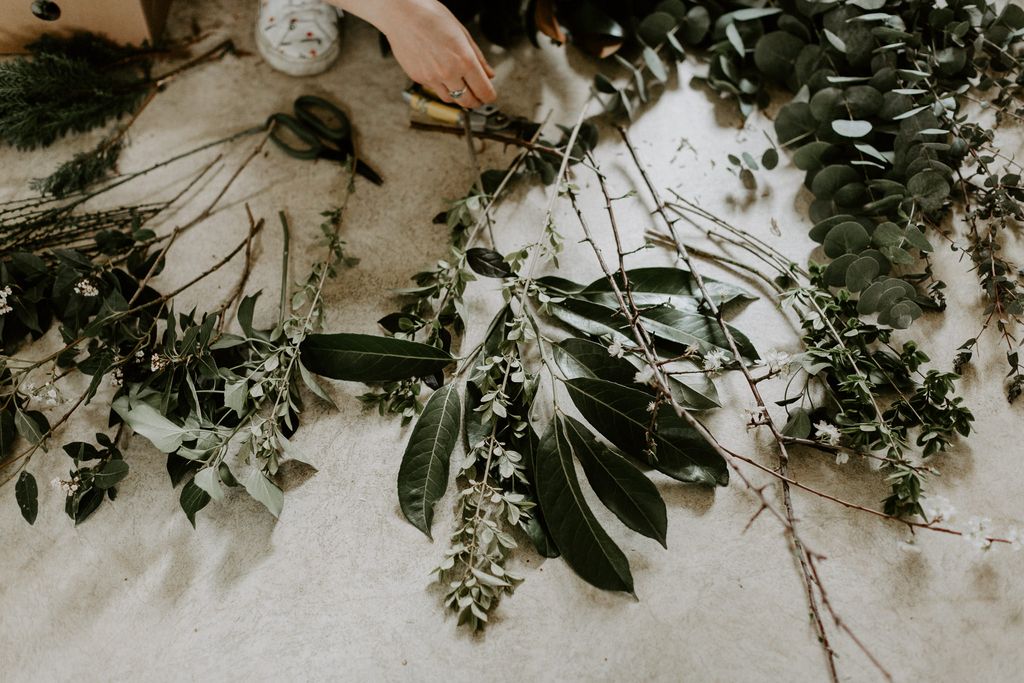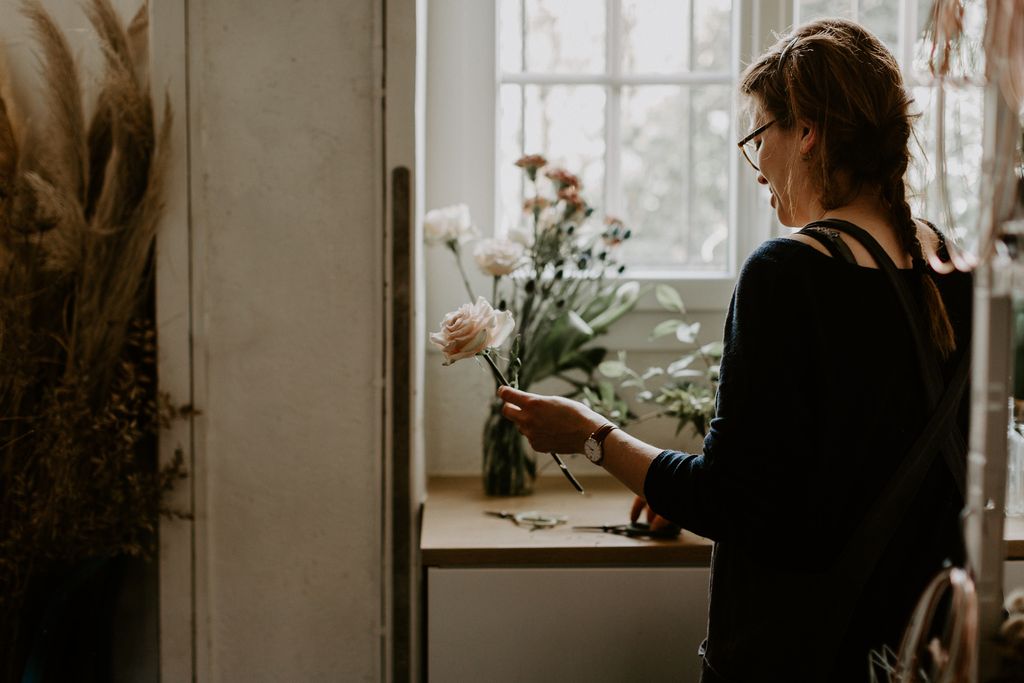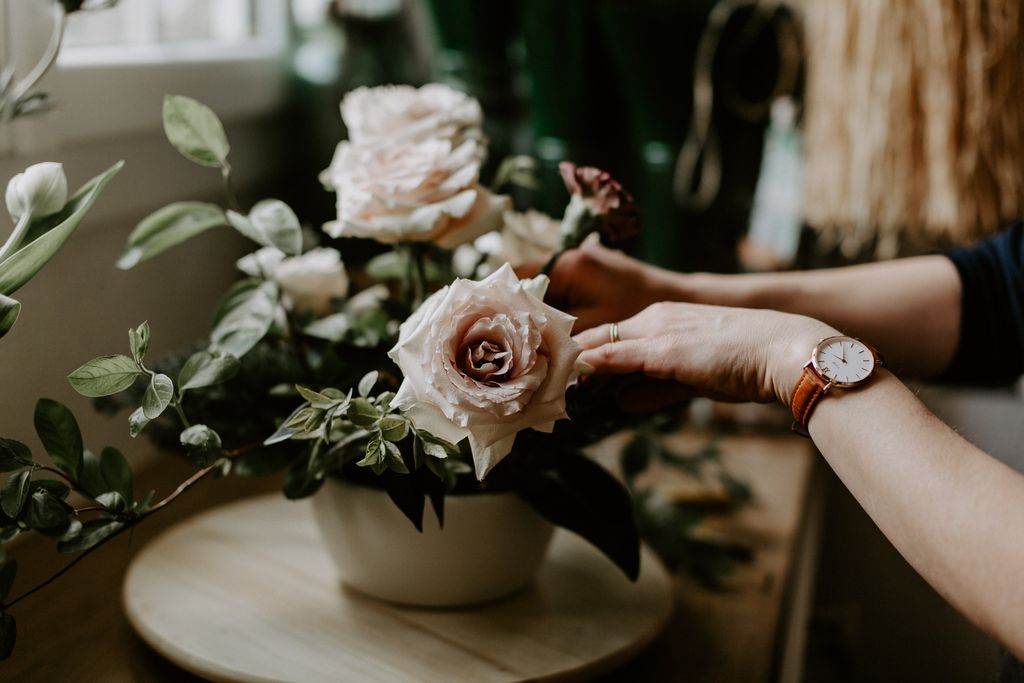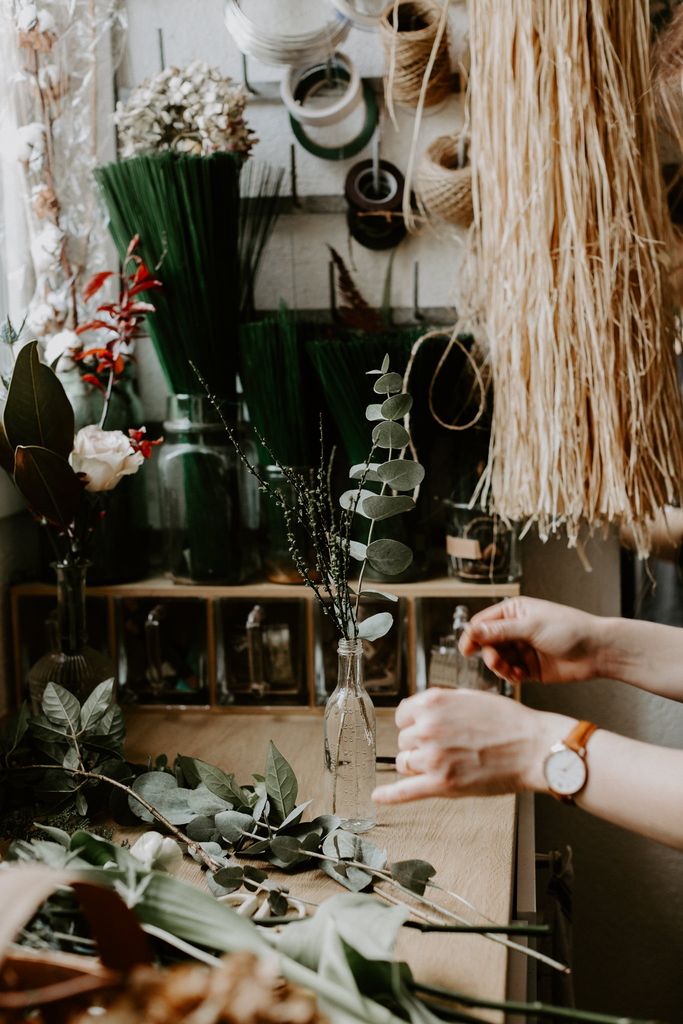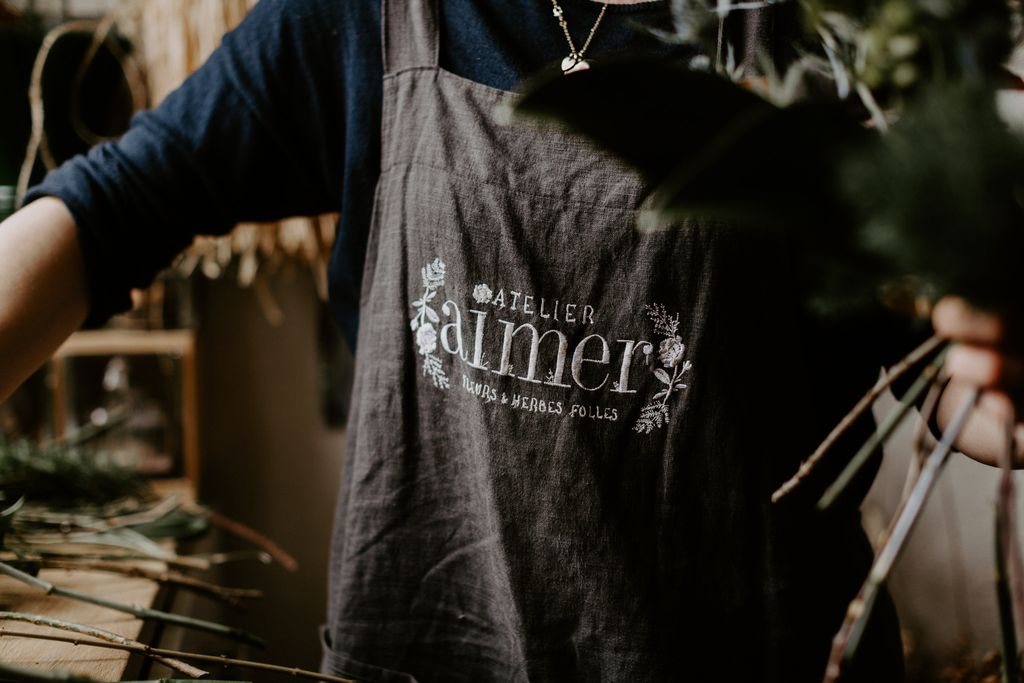
Flowers & eco-responsibility?
I’ve been talking about eco-responsibility for a while now, I already wrote an article about this topic in which I explained my approach and the actions I set up on a daily basis to limit as much as possible my environmental impact as a florist.
But since this is such a broad and complicated topic, I wanted to share with you some more thoughts and questionings with full transparency.
It’s kind of my ‘Dear Diary’ moment – Journal of a florist in constant existential questioning 😅
Utility of flowers…
From the moment I decided to become a florist, I’ve been asking myself a lot of questions about the paradox between floristry and my ecological concerns.
Because yes, let’s be clear, floristry and ecology are necessarily contradictory.
Let me explain myself.
For a florist to work, she/he needs flowers that needed resources to grow : water, fertilizer, pesticides (for most flowers on the cut flowers market…), gas for transportation, social impact… it’s a very quick summary but you get the idea.
And all that for what? For a short-lived final product that won’t last more than 2 weeks. And for a product that, of course, is not saving lives nor responding to any primary need.
If I stopped there, the picture would be quite dark…
But… then comes the concept of Beauty.
For sure, we don’t ‘need’ Beauty to live. But sincerely, would life taste the same without it?
I consider floristry as an art, and as every other art form, by its beauty it is able to convey emotions, to make us dream, to transport us.
In our society, ain’t that something essential in the end? To feel? To dream? To be transported? And finally, wouldn’t it be the ephemeral nature of flowers that make them so beautiful? It reminds me of the Vanities, those still-life paintings from Baroque period which often represented faded flowers as a symbol of life’s fragility.
Anyway, I digress, a little.
Let’s put aside for a minute the philosophical considerations to assume that yes, we do need flowers in our lives, because we need Beauty.
Which brings me to the question : how is it possible to combine floristry and eco-responsibility?
I will not go through all the details here since I already addressed some of them in my previous article.
But there are still quite a few topics I haven’t talked about and I would like to discuss here.
100% local flowers?
As I said previously, my major issue now is that I would deeply and sincerely love to work only with local blooms, but as of today it is not possible.
Why? Simply because I don’t have a sufficient offer.
Last season, I (finally) found a local – and organic- grower from whom I buy many flowers.
I also have a few French-grown flowers available at my wholesalers but the offer is very, very narrow.
If I lived nearby Paris and could go to Rungis market, things would be quite different. Indeed over there the offer is bigger, and on top of that all products are available in one place.
But when you don’t have access to Rungis, sourcing 100% locally grown flowers can be a real obstacle course.
There is also local production here in the West of France but…
-it’s too far. For example the beautiful flowers from La Ferme de Lescinquit. I would love to buy from there, but the farm is too far from Nantes, and I simply can’t take one full day to do the trip there and go get my flowers…
-the flowers produced don’t have any creative interest… Yes, I could find a few more local blooms. But so far, most of the flowers I see are not in line with my creative expectations. They are varieties I don’t like to use, with very ‘basic’ colors, and in my eyes they have a very limited creative appeal.
Yet I don’t want to compromise my creativity, but I will get back to that later…
BUT… I have great hopes!
Today, things are changing. French flowers production, which was declining, is starting to rise again. New growers are starting, structures are being created to promote French flowers and help the different actors to help each other and work together in the same direction.
I’m ok course thinking of the Collectif de la Fleur Française to which I adhere and which makes a tremendous work in that direction.
So I hope that within a few months, a few years, also driven by increasing consumer demand, the offer will be broader, more easily accessible, more qualitative.
In the meantime… I cheat!… I forage, I mix dried and fresh blooms, I grow flowers in my own yard (not without pain, because growing flowers is another job!) … well I’m doing what I can 😅
THE question of dyed and bleached flowers
If you follow the trends in flowers, you must have noticed the growing appeal of dyed and bleached flowers.
First of all, let’s explain what it is about because there are a lot of different products. It’s not so simple to get infos because wholesalers and even suppliers are not always very explicit about it.
From my researches I found this:
-dyed fresh flowers (perishables) : for example the trendy ‘Brownie’ tulips from VIP Roses, a Dutch producer > according to VIP Roses, the dyes are natural, they don’t contain any heavy metals, are biodegradables and the flowers remain compostable. Yet I don’t know if this apply to all dyed fresh flowers on the market?…
-preserved flowers (can be kept over time) > here’s the process: the stem of the vegetal is replaced by a solution made of water, glycerin, substrate and dye. This is what allows the vegetal to keep its softness and to be kept over time.
So far it doesn’t seem so bad… ok, these are processed products but the process seems pretty ecological.
But there are still two important types of products:
-bleached vegetals: that’s an all other story… in order to bleach a flower or foliage, many chemical treatments are needed, using products far from being biodegradable… I won’t go into the chemistry details because I don’t want to frighten you but if you’re interested in this subject your can read this article by Little Farmhouse Flowers which is pretty detailed.
-painted flowers: here I am talking about the flowers or foliages that the florist will paint her/himself with spray paint. Usually the paint used is water-based and specially designed for flowers. But hey, that’s still paint…
I have very mixed feelings about all these products, and here is my position about them, in full transparency.
> for fresh flowers, I usually avoid dyed products.
Yet I will use them from time to time, coming from suppliers that give some infos about their process. Why? Because I’m like everyone else. Officially, I eat organic food but if someone puts Nutella under my nose, I can’t resist. And that’s ok. You have the right to burst once in a while…
> I use preserved and bleached vegetal in my timeless creations. Why? Because I think they have a real added value alongside dried flowers : broader color and flower variety palette, visual aspect closer to fresh flower. We’re talking here of creations that will last over time, for several years : I feel then that the fact that they’re processed products is less problematic. But I will never use these products mixed with fresh flowers, indeed since they required a heavy manufacturing process, I find it outrageous to trash them after a couple days.
Yes, I could work with 100% dried flowers, 100% local. BUT… my creations would look very different and my palette would be much more narrow.
Which brings me to the subject of creativity…
Being eco-conscious, a brake on creativity?
I will comme straight to the point, in my opinion the answer is yes.
Yes because it obviously reduces the range of flowers that can be used.
There are various options:
-offer strictly 100% local flowers, hence work with (much) more limited palette.
-not care about it. It’s also a choice, many florists don’t really pay attention where their flowers come from. In that case no limit, no brake on creativity. But at what price?
-and there’s the in between, where I am. I cannot (yet) commit to offer 100% local flowers, because it would be too much of a drastic cut on my palette. I believe my style is also defined by the color and texture associations I choose. I am very careful about where my flowers come from, but it is not my only criteria. I don’t want to compromise on my creativity.
One comment though: I’m only addressing the flower sourcing topic here, but as I explained in my previous article, there are many other actions to an eco-responsible approach of floristry, particularly the choice to design foam-free and more broadly in a zero waste approach.
The good news about it : it is NOT a brake on creativity!
There are really very few arrangements that cannot be created without floral foam, up to us florists to refuse to design them and offer alternatives. Because there are ALWAYS alternatives, that don’t necessarily cost more money or are more complicated to design.
Clients are more and more sensitive to all those environmental concerns, this can only encourage us, florists, to move down that road and develop best practices.
I told you, I’m talking here with honesty and transparency. But those topics aren’t always dealt with that way, and that bugs me…
Real eco-responsible approach VS greenwashing
I will conclude this article with a few words on the communication abuses about eco-responsibility in floristry. Greenwashing is actually widespread in many other fields, but I’ll stick to flowers here…
Eco-friendly floristry is more and more trendy.
That’s all the better, and everything I hope for!
But…
I see way too often, on social medias or other, small phrases that annoy me, that may be accepted by clients but won’t fool the other florists, those who know the backstages.
I won’t name or give examples here, but I just think that if there’s one topic we NEED to be transparent about, it’s this one.
Our clients are mostly unaware of the ecological impact of floristry. We can choose to not address that topic. But if you do talk about eco-responsibility, then please cut the crap and be transparent : nobody is perfect anyway.
I recently read something about zero waste and I think it applies pretty well here, hence I’ll conclude with that: We don’t need a handful of people making things perfectly. We need millions of people trying, imperfectly.
Here’s for this little column, these existential questionings I wanted to share… I warned you, it’s messy, a bit rambling, but I wrote it with my heart and with complete sincerity.
And that makes me feel good to write it down, it’s cheaper than a therapist 😂😅
I’d be happy to get your feedback, don’t hesitate to send me a mail or DM to share your comments.
Thank you ❤︎
Pictures by Dorothée Buteau



